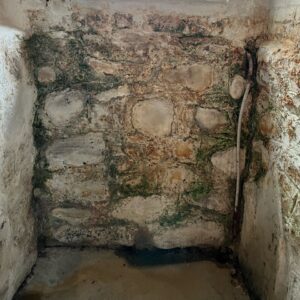How Seasonal Changes Can Trigger Mold Growth – And Why Testing Matters
 Mold is a persistent issue for many homeowners in the Greater Boston area. But what most people don’t realize is how much seasonal changes can influence mold growth. Shifts in temperature, humidity, and ventilation can all create the perfect environment for mold to thrive — especially during transitional periods like spring and fall. If left unchecked, this hidden threat can cause structural damage, trigger health problems, and lower your property’s value.
Mold is a persistent issue for many homeowners in the Greater Boston area. But what most people don’t realize is how much seasonal changes can influence mold growth. Shifts in temperature, humidity, and ventilation can all create the perfect environment for mold to thrive — especially during transitional periods like spring and fall. If left unchecked, this hidden threat can cause structural damage, trigger health problems, and lower your property’s value.
Here’s what every homeowner should know about the connection between seasonal changes and mold growth — and why professional mold testing is one of the smartest steps you can take to protect your home.
How Each Season Creates Ideal Conditions for Mold Growth
Spring: The Damp Awakening
Spring in New England brings a mix of rain, melting snow, and warmer temperatures — a recipe for moisture buildup. Water often finds its way into basements, crawlspaces, and behind walls. If your home isn’t properly ventilated or waterproofed, it doesn’t take long for mold to begin forming. Since mold thrives in damp, dark, and warm environments, your home could be at risk without you even knowing it.
Summer: High Heat and Humidity
During Boston’s hot and humid summers, excess indoor moisture can come from both the outdoors and from daily activities like cooking and showering. Without adequate airflow and dehumidification, this humidity becomes trapped, especially in attics, bathrooms, and poorly insulated areas. Mold loves this type of climate. Even air-conditioned homes aren’t immune, especially if condensation builds up in ductwork or on poorly sealed windows.
Fall: Temperature Swings and Closed Windows
As temperatures begin to drop, homeowners typically close their windows and rely on heating systems, reducing airflow in the home. The fluctuation between warm days and cool nights can lead to condensation on windows and walls, and any moisture that sneaks in during this time may get trapped. With limited ventilation, mold spores can multiply quickly in hidden areas like behind drywall, under carpets, and inside insulation.
Winter: Insulation Traps Moisture
You’d think cold weather would stop mold in its tracks — but that’s not always the case. In fact, mold can still grow in cold temperatures if moisture is present. In well-insulated homes, indoor humidity can remain high, especially in areas with poor airflow. Add in possible water leaks from ice dams or pipe bursts, and you’ve got a perfect storm for mold development.
Why Mold Testing Is Critical Year-Round
Seasonal shifts make your home vulnerable at multiple points throughout the year — which is why routine mold testing is so important.
Here’s what professional mold testing can help you identify and prevent:
- ✅ Mold that spreads undetected behind walls or beneath surfaces
- ✅ Airborne mold spores that worsen allergies and asthma
- ✅ The source of musty odors
- ✅ Health risks to children, seniors, and immunocompromised individuals
- ✅ Water damage you may not have noticed
Whether you’re buying a new home, have experienced flooding, or simply want peace of mind, scheduling mold testing at least once a year — especially after major seasonal changes — offers one of the most reliable ways to preserve your investment.
Health Risks of Untreated Mold
Mold doesn’t just damage your home — it also puts your health at risk. Exposure to mold spores can lead to:
- Sneezing, coughing, and sinus congestion
- Asthma attacks or worsening of symptoms
- Skin irritation and rashes
- Headaches and fatigue
- Long-term respiratory issues, particularly in children and seniors
For homeowners in the Greater Boston area, where humid summers and wet winters are the norm, ignoring potential mold problems can put your family at risk all year long.
Signs You May Need Mold Testing
Not sure if you need mold testing? Look out for these warning signs:
- A musty or earthy smell anywhere in your home
- Discoloration on walls, ceilings, or baseboards
- Persistent allergy-like symptoms that worsen indoors
- Wall finishes lifting or cracking, often in bathrooms and basements
- Condensation on windows or damp spots near vents
- Past water damage or flooding incidents
Even if mold isn’t visible, it may be hiding inside walls, under flooring, or in ductwork. The most reliable way to confirm mold is through professional testing.
Why Choose Aspen Environmental
At Aspen Environmental, we specialize in mold testing, remediation, and prevention for homes and businesses in Greater Boston, MA, and surrounding areas. Our certified mold experts use advanced testing technology to locate mold, even in hidden or hard-to-access spaces. Whether you’re experiencing indoor air quality issues or simply want a seasonal checkup, we’ll help you get to the root of the problem.
We provide:
- Detailed mold inspection and lab testing
- Moisture mapping and leak detection
- Honest, transparent reporting
- Professional remediation if mold is found
Our goal is to help you create a healthier, safer indoor environment — without upsells or scare tactics.
Expert Mold Testing Providers in the Greater Boston Area
As the seasons shift, don’t let mold sneak into your home unnoticed. Stay ahead of seasonal risks with mold testing from Aspen Environmental. Whether you’re concerned about spring flooding, summer humidity, or winter condensation, we’re here to help. Call us at (978) 681-5024 or schedule your appointment online. Protect your health. Protect your home. Choose Aspen Environmental — your local mold testing and remediation experts.

